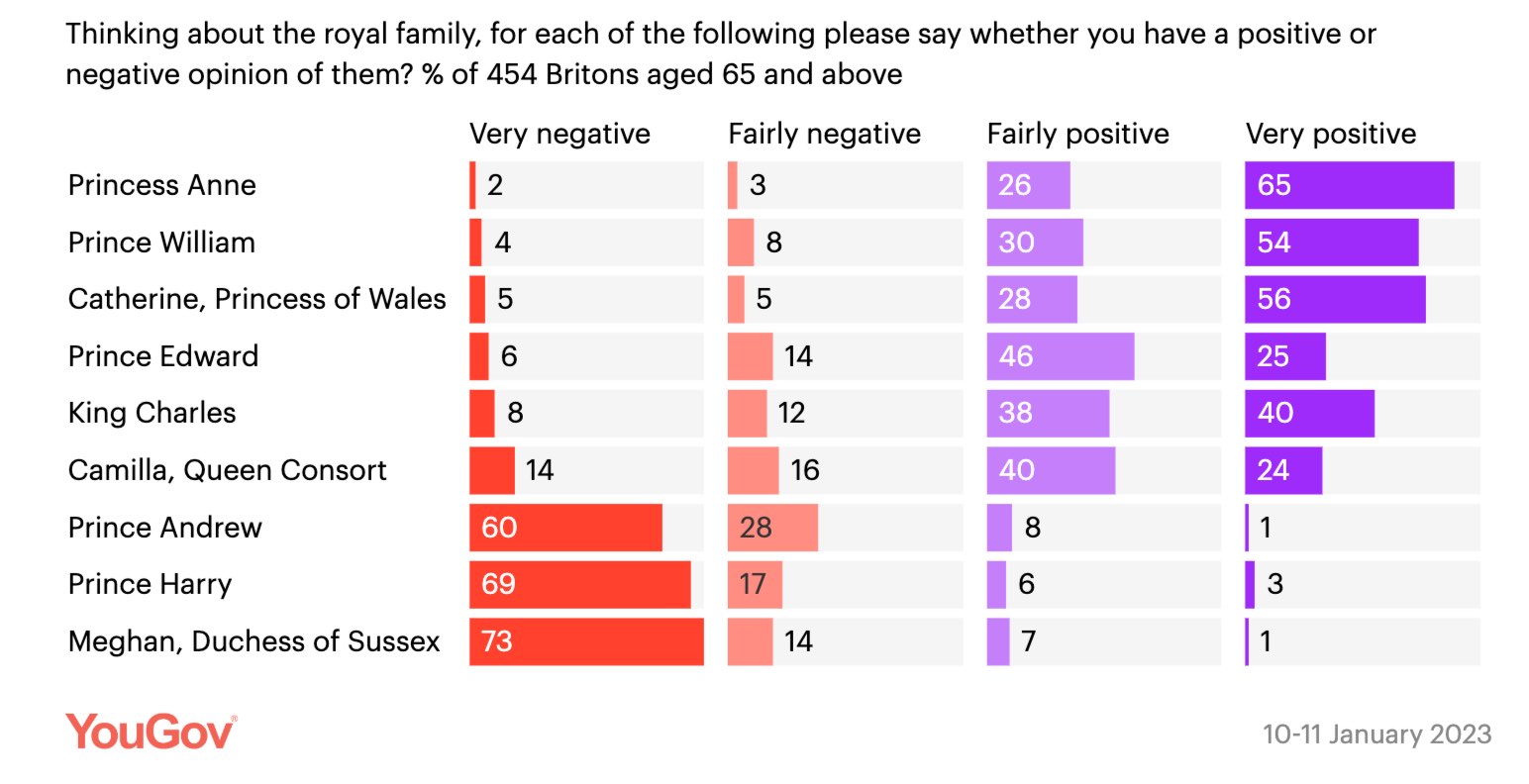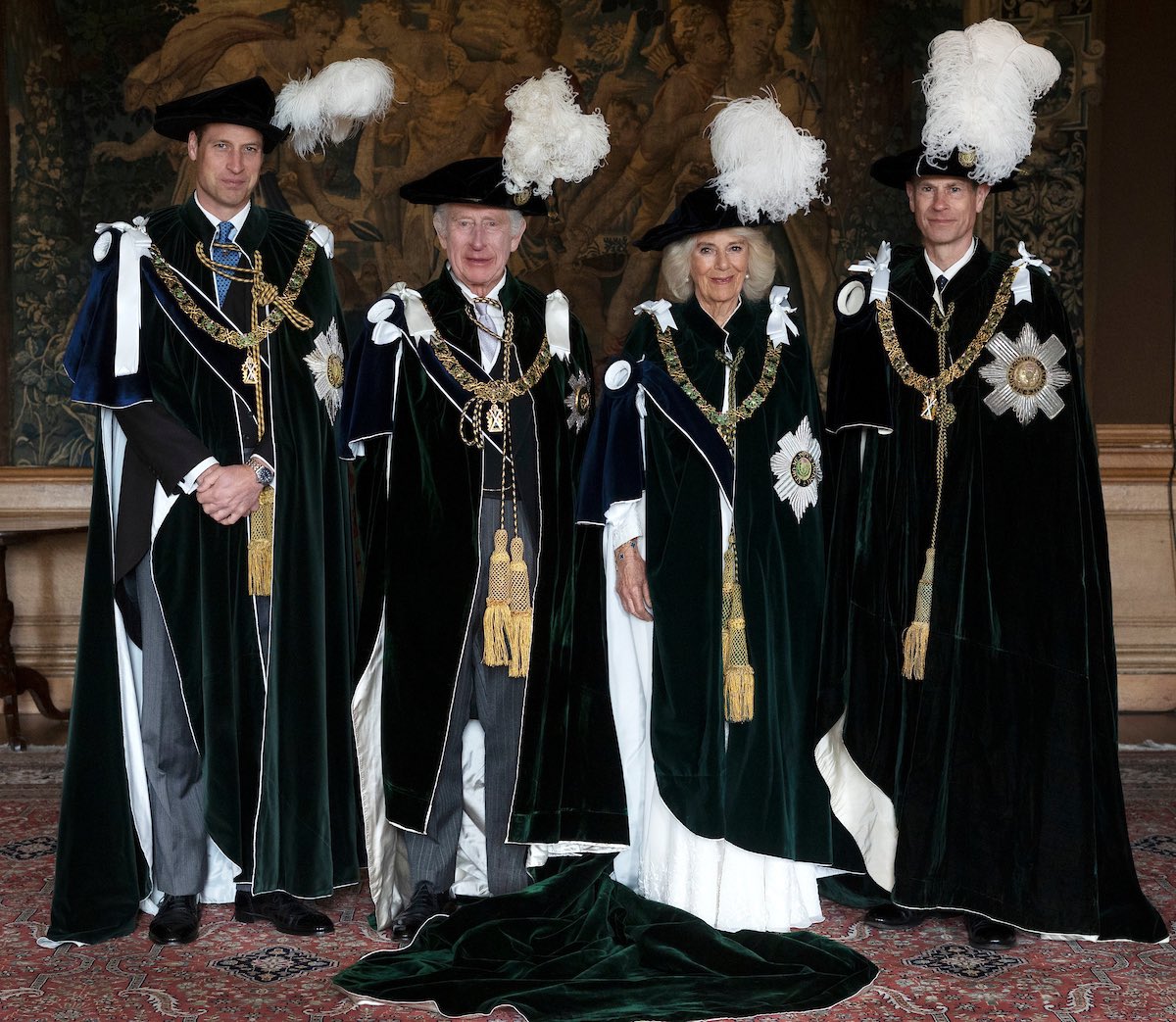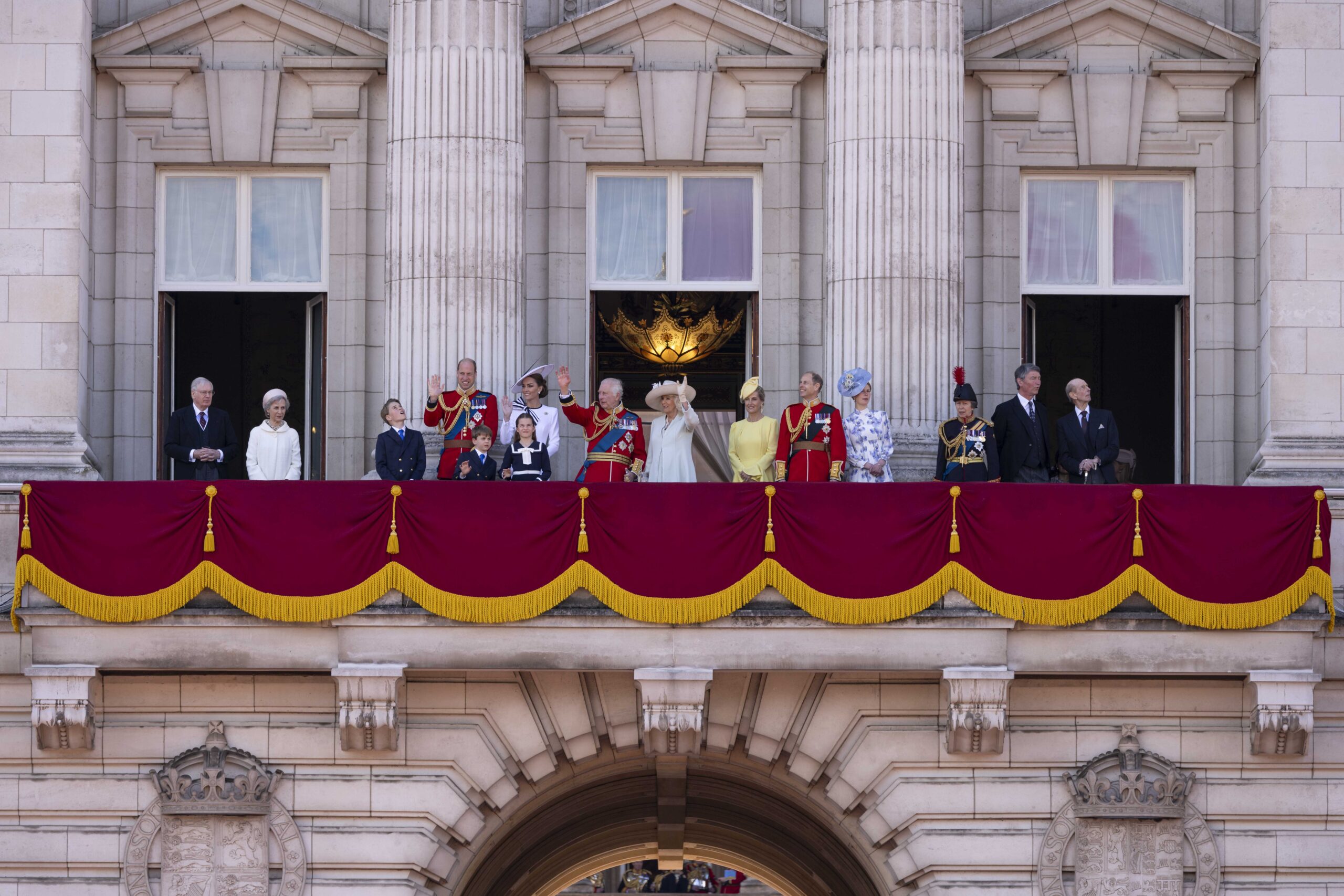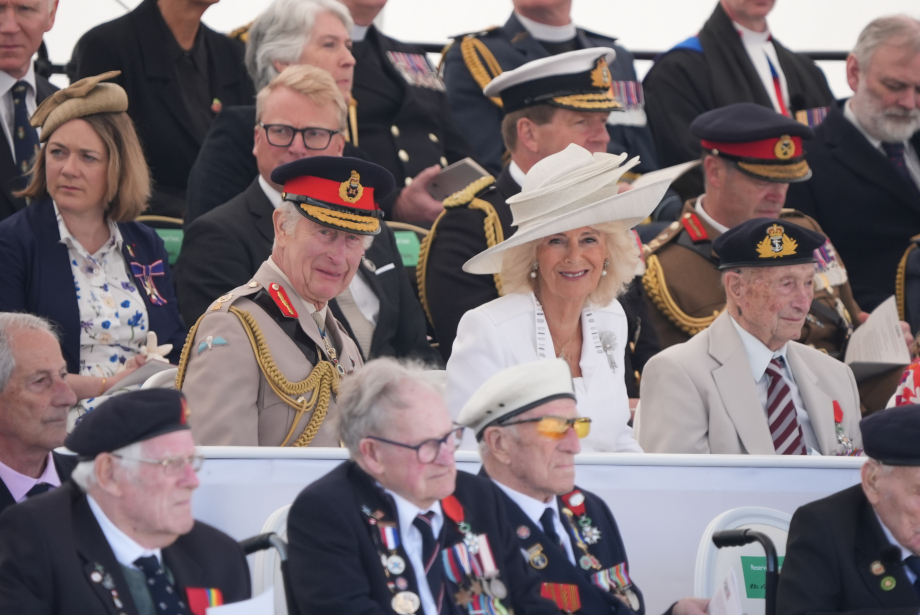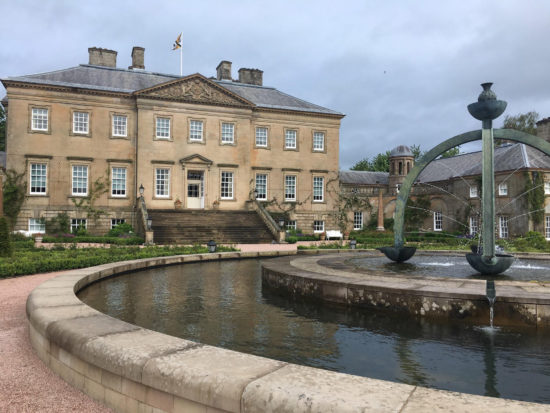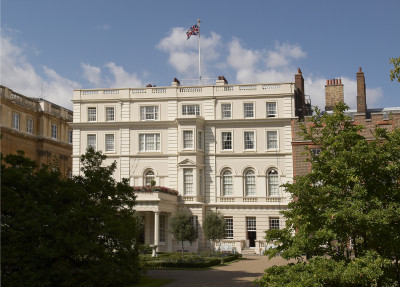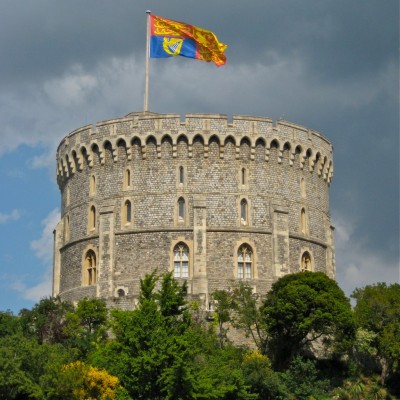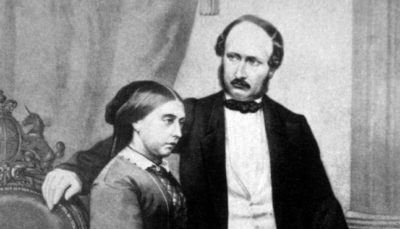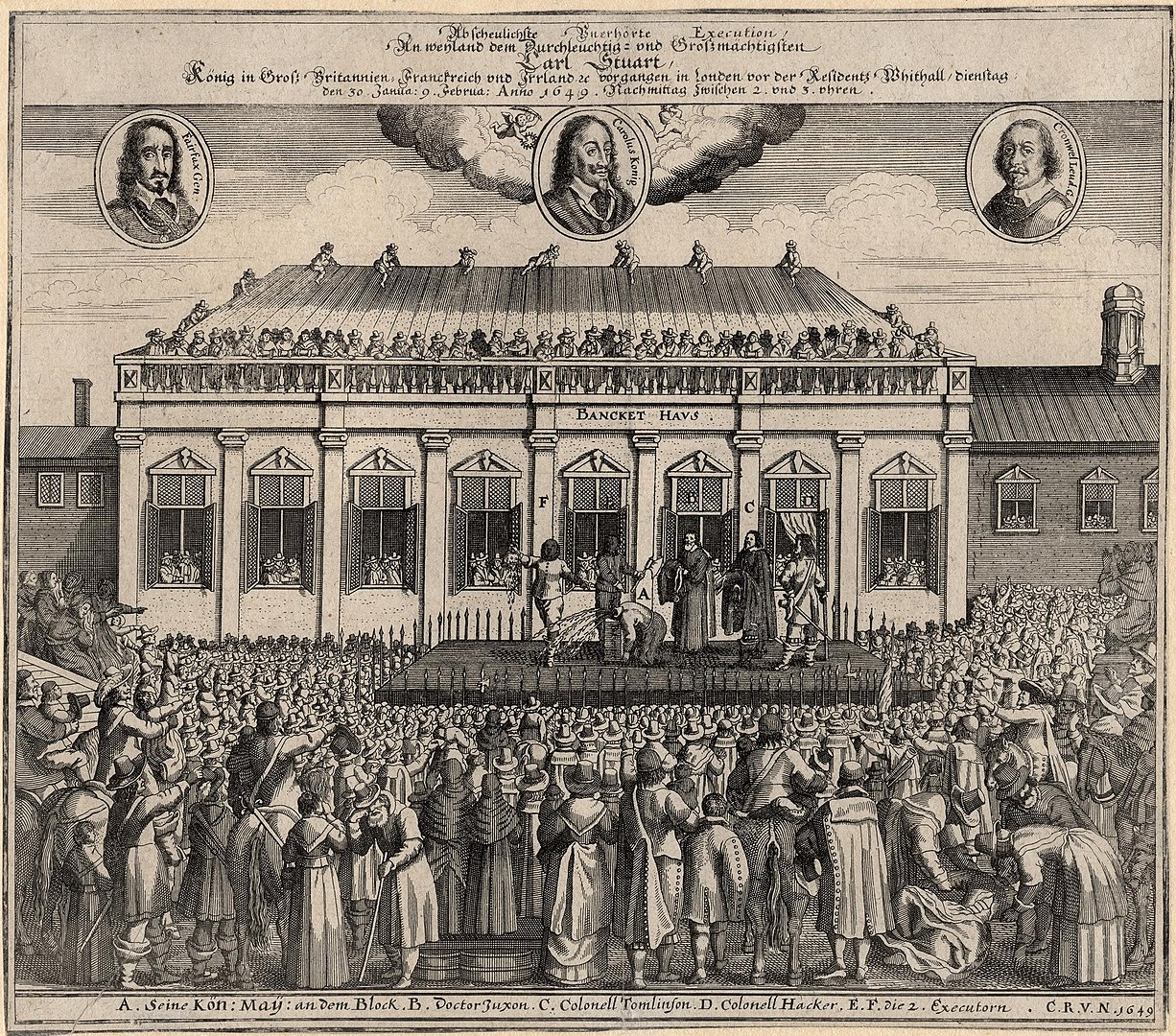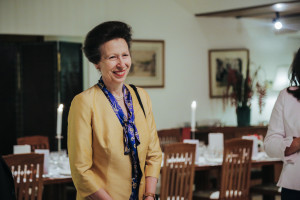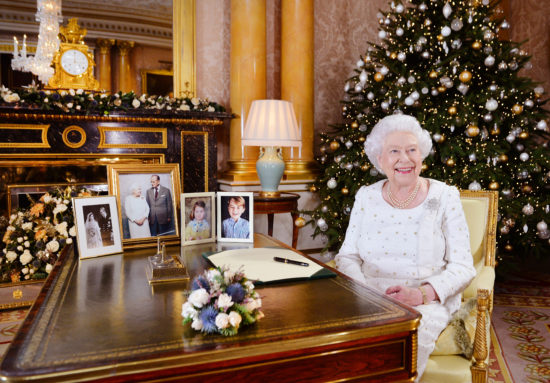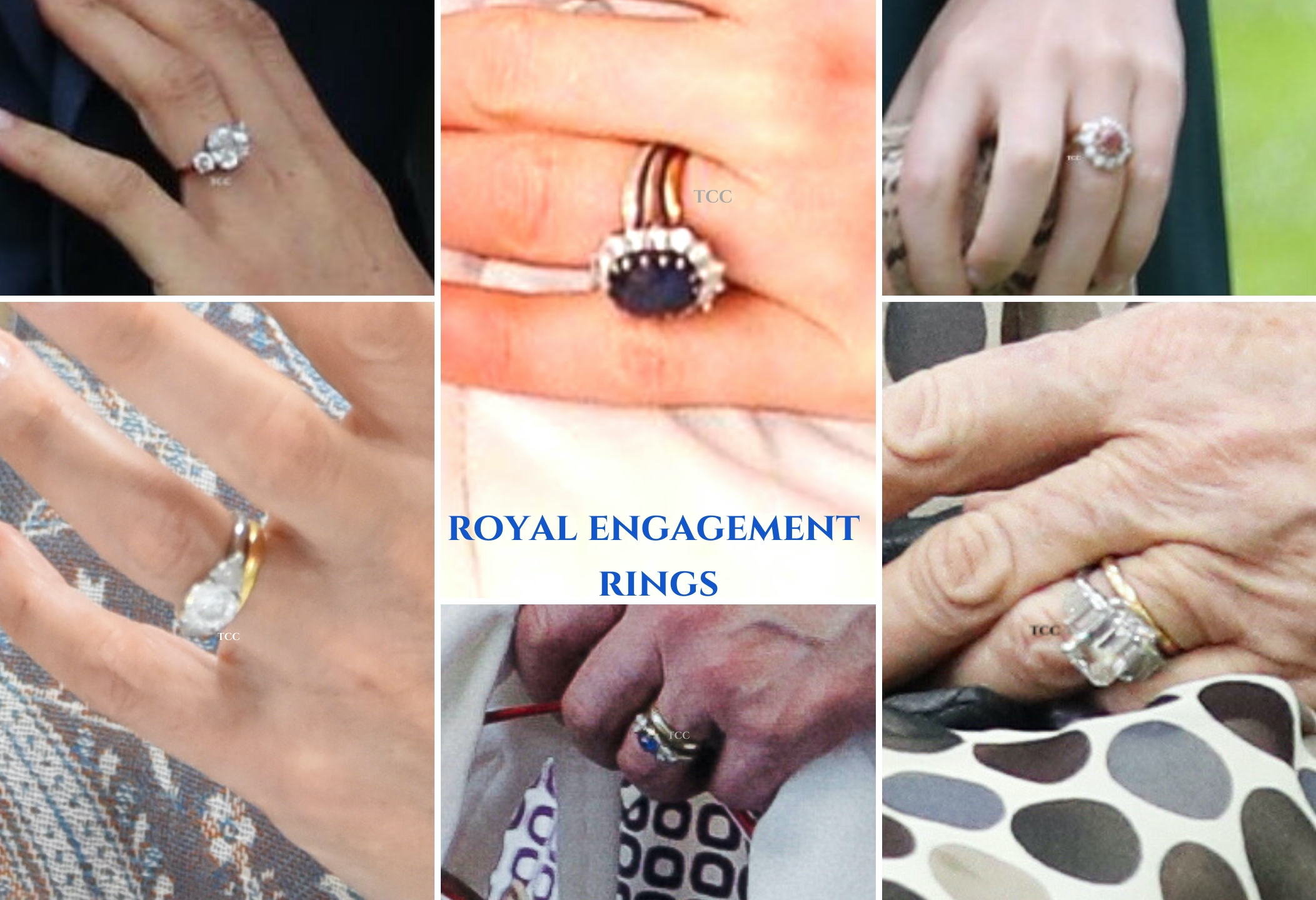After succeeding to the throne on 8th September 2022, Charles III took the mantle from his mother, Queen Elizabeth II, who reigned for 70 years. The longest-serving heir to the throne took take his place as the new Monarch of the UK, and 14 other realms.
Today, Charles has been King for six months, but has his first six months been smooth sailing or a turbulent time?
The passing of Elizabeth II & acceding to the throne
On 8th September, the then-Prince Charles was at Dumfries House when the news came through that the Queen’s doctors were concerned for her health. He went straight to Balmoral, where the Queen was on her summer break. She died later that afternoon.
As the news broke that the Queen had died a few hours later, there was an immediate outpouring of condolences and support for not only the Royal Family, but the new King himself. And it surprised many of us.

Less than 24 hours after the death of The Queen was announced, King Charles and Queen Camilla returned to Buckingham Palace, where the crowds had gathered in grief, and possibly with the hope of getting a glimpse of the couple.
Members of the public had begun placing floral tributes and messages for the family, as soon as the news was announced.
As The King and Queen greeted the public, the looks on their faces showed how visibly upset they were. There were cheers and shouting of ‘God Save the King’ from the public, which put a smile on Charles’ face. Of course, the Royal has not always had the best reputation with the public. One woman even leaned over the barrier to kiss him on the hand, and another woman kissed him on the cheek, something royal watchers don’t often see.
Upon returning to Buckingham Palace, The King made his first televised speech as Monarch, where he spoke of his ‘beloved mother’, who was ‘an inspiration and example to me and to all my family, and we owe her the most heartfelt debt any family can owe to their mother’.
It was also during the speech he announced William and Catherine – at the time The Duke and Duchess of Cambridge – would be created Prince and Princess of Wales, additionally wishing Harry and Meghan his best as they continued to live in the US.
The King was then required to meet with the Accession Council, as the transition of the new reign was underway. The Monarch spoke to the Privy Council in his first meeting as Sovereign, where he gave a short address.
‘My lords, ladies and gentlemen it is my most sorrowful duty to announce to you the death of my beloved mother the Queen. I know how deeply you, the entire nation and, I think I may say the whole world, sympathise with me in the irreparable loss we’ve all suffered. It is the greatest consolation for me to know the sympathy expressed by so many to my sister and brothers and that such overwhelming affection and support should be extended to our whole family in our loss.
‘My mother’s reign was unequalled in its duration, its dedication and devotion. Even as we grieve we give thanks for this most faithful life’. He also spoke of the ‘heavy responsibility’ of the role that has passed to him and the ‘inspiring example’ that was set for him by his late mother, Elizabeth II.
Starting a new job at 73 and 75 retrospectively would be hard for anyone – but imagine having to the global press and cameras watching you every day for the first few days? Well, The King and Queen were required to undertake a country-wide tour, where all the cameras were upon them, as international curiosity about the new King and Queen ensured interest from the media. The couple visited Scotland, Wales, Northern Ireland and London on these trips.
19th September saw the moment the Royal Family were likely dreading: the State Funeral of Queen Elizabeth II. The King led the family as they attended a service at Westminster Abbey, including the long, public walk of the funeral procession. Throughout the day, it was clear that Charles was bereft.
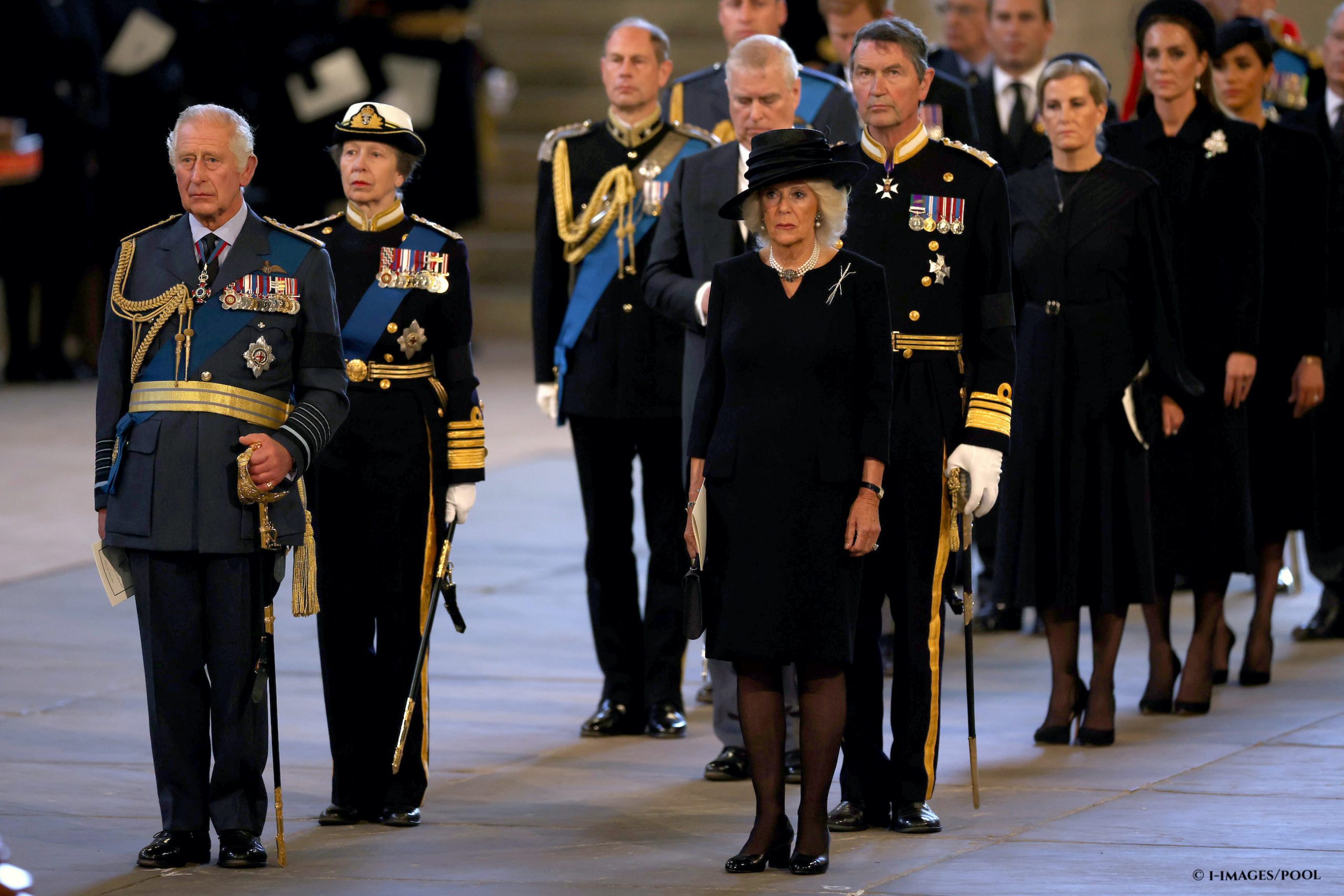
Members of the Royal Family after the Queen’s death
Royal engagements and State Banquets
Whilst The King has new duties and responsibilities as Monarch, we still see him carrying out royal visits, just on a less frequent basis. Even whilst carrying duties out in public, large crowds have gathered to see him, as they did when he was Prince of Wales, and when the late Queen carried out public engagements.
However, with big crowds comes an increasing security threat. We have seen an increasing number of protests, targeted towards The King and Queen on their visits. While the Monarchy has largely managed to hold on to its popularity since Charles’ accession, it does not enjoy the same level it did under the Queen, particularly in what were considered high favour years, between 2012 and 2020.
There have also been a number of instances, where eggs have been thrown at His Majesty, both in York and Luton. The protests take place in relation to the position that a Monarchy holds in 21st century Britain, mostly from anti-monarchy groups like Republic. The approach has been, and continues to be, ignoring these such groups in public.
We have also seen King Charles display the same humour that he has always had, from dancing with Anne Frank’s stepsister, to celebrating Hanukah.
The King conducted his first investiture ceremony in November as Monarch, a role he has performed for decades to support his mother. However, this time, the honours were issued in his name.
Today at Windsor Castle, The King today hosted his first Investiture Ceremony since his Accession.
Congratulations to everyone who received their honour today!
Meet some of the recipients 👇 pic.twitter.com/dtaUVpFlf4
— The Royal Family (@RoyalFamily) November 16, 2022
The same month also saw The King host his first State Visit, where he welcomed the South African President, Cyril Ramaphosa to London. The President received a Ceremonial Welcome at Horse Guards Parade. The President and members of the Royal family then travelled along The Mall to Buckingham Palace, in carriages pulled by horses from the Royal Mews.

William and Kate joined Charles and Camila for the State Visit, welcoming the President of South Africa (MOD)
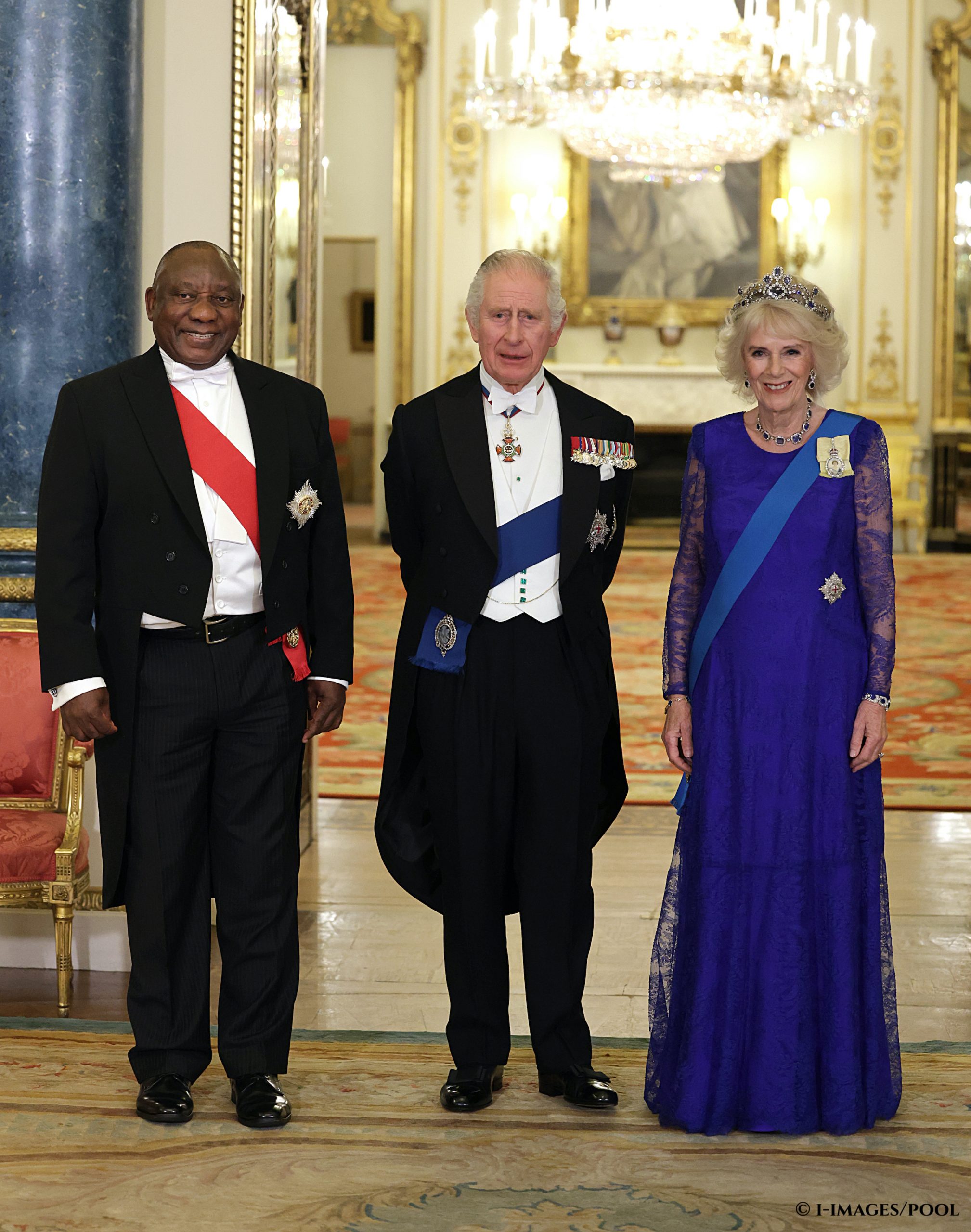
King Charles III and Camilla, Queen Consort with South African President Cyril Ramaphosa, at a State Banquet for the President during his State Visit to the UK at Buckingham Palace
Charles also put on a display in collaboration with the Royal Collection Trust with items relating to South Africa, ending the day with his first State Banquet.
Family problems – The Duke and Duchess of Sussex
As with many families, difficult times come and go, and the Royal Family is no different. We have seen the release of The Duke and Duchess of Sussex’s Netflix documentary, entitled ‘Harry & Meghan’. The documentary explored their story from the early days of how they met, their wedding, as well as their time as senior working Royals and their view on why they stepped back from royal duties.
The documentary – while not as explosive as anticipated – saw accusations of palace aides leaking stories on the couple, and of bullying. Buckingham Palace and Kensington Palace did not comment on the issues raised in the programme.

The start of 2023 saw The Duke of Sussex release his memoir, ‘Spare’. Prince Harry spoke about the relationship between his brother, Prince William, The King and Queen (including alleged physical altercations with his brother); his drug use; his time in the Army, serving in Afghanistan; and his relationship with his wife, Meghan. Buckingham Palace and Kensington Palace also did not comment on the issues raised in the book.
Though many were shocked by some of the stories shared, largely, the Royal Family came out of the media frenzy with just a few ‘bruises’. Polls in the UK (Ipsos) about people’s thoughts on members of the Royal Family saw them take a hit in terms of popularity points, with 61% saying they have a favourable opinion of Prince William and 60% of The Princess of Wales (-8 and -7 respectively), but it was Harry and Meghan who were generally more affected by the revelations (-7 and -5 respectively down to 23% and 19% favourability). A survey from YouGov tells a similar story, but with slightly lower popularity figures all round.
The Monarchy’s popularity as an institution remained largely unaffected, with 42% believing it would be worse for Britain if the Monarchy was abolished (+2 from December 2022).
Prince Andrew, we are told by reports (Express, Metro, Good Morning Britain), will not be allowed back into public life, a view taken by Charles and William.
The Royal Household – progress at Buckingham Palace?
Racism allegations broke out at Buckingham Palace at the end of November, when Lady Susan Hussey was accused of racism, after she repeatedly questioned a guest, Ngozi Fulani, as to where she was from. The incident took place at a reception hosted by The Queen Consort to raise awareness around violence against women.
Lady Susan served as a lady-in-waiting to the late Queen and accompanied her at the funeral of the Duke of Edinburgh. The allegations saw wide-spread media coverage, with the Palace facing questions around racism within the institution – the second time in two years, following the Sussexes’ interview with Oprah Winfrey. It was something that was appropriately taken seriously.
The Palace issued a statement after Lady Susan met with Ngozi Fulani a week later, saying that the pair had spoken and that the meeting was ‘filled with warmth and understanding’. Lady Susan also ‘offered her sincere apologies for the comments’ which caused ‘distress’, the statement said, and mentioned that Lady Susan has ‘pledged to deepen her awareness of the sensitivities involved and is grateful for the opportunity to learn more about the issues in this area’.
To show support from on high, it finished: ‘Their Majesties The King and The Queen Consort and other members of the Royal Family have been kept fully informed and are pleased that both parties have reached this welcome outcome’.
News was also made with Camilla opting to ditch the formal Ladies in Waiting as Queen, instead opting for ‘companions’. These women, The Queen’s friends, will attend a select few high-profile engagements with her each year, and not regularly as the late Queen was. Another sign that times are changing, even if in small ways, at the Royal Household: more streamlined, less formal.
Politics
Typically, the Monarch has to remain impartial in regards to political matters. However, we know Charles has famously been an outspoken individual, including on topics such as climate change.
His Majesty’s impartially came into question after it was announced he would be meeting President of the European Commission, Ursula von der Leyen at Windsor Castle. Von der Leyen had come to the UK to meet the Prime Minister, so the pair could finalise a new UK deal with the European Union, regarding post-Brexit trade arrangements in Northern Ireland – the so-called Windsor Deal, discussed at Windsor’s Guildhall.
The meeting with The King was seen by some as an implied endorsement of the political deal. Many had questioned whether the audience was a bad judgement from the Monarch and his advisors or if the Government were trying to soften the deal amongst the Northern Irish DUP and the ERG.
The government laid responsibility at the palace’s feet for the meeting, claiming it was a decision was for The King to make, but members of the Democratic Unionist party (DUP) and some Conservative Brexiters accused the Prime Minister of dragging the Monarch into politics, calling it crass’ and ‘controversial’. Buckingham Palace said Charles was acting on ‘the government’s advice’. One former royal correspondent wrote he ‘should have run a mile’ from the meeting and it was ‘seriously mistimed’. It seems this was the first real faux pas of the reign.
Indeed, Windsor is not generally used for governmental dealings or meetings of this kind.
The King has also seen two British Prime Ministers in his reign so far: Liz Truss was the late Queen’s 15th Prime Minister and came into power, only days before the Queen’s passing. Rishi Sunak was appointed Prime Minister in October, becoming the second Prime Minister. He is also the first British Asian, and Hindu, to hold the office.

The King meets Rishi Sunak, as he becomes the new British Prime Minsiter. (Royal Family).
We have always known Charles to be a forward thinker, and not one to shy away from an uphill struggle, but he has been less revolutionary than we might have expected. He is sticking to the late Queen’s strategy of continuing with the well-trodden path until something makes sense to change it.
One issue that perhaps doesn’t fit with this paradigm, however, is that of asking The Duke and Duchess of Sussex to vacate Frogmore Cottage – allegedly to house Prince Andrew, of all people, in a smaller property on the Windsor Park estate…
So whilst, The King’s first six months have not been smooth sailing, the outpouring support from the public has shown a general acceptance for the new Monarch.
We expect Charles will be a dependable Monarch, taking inspiration from his late mother’s reign – but with a small number of tweaks to forge a subtle, but new legacy as King Charles III.
